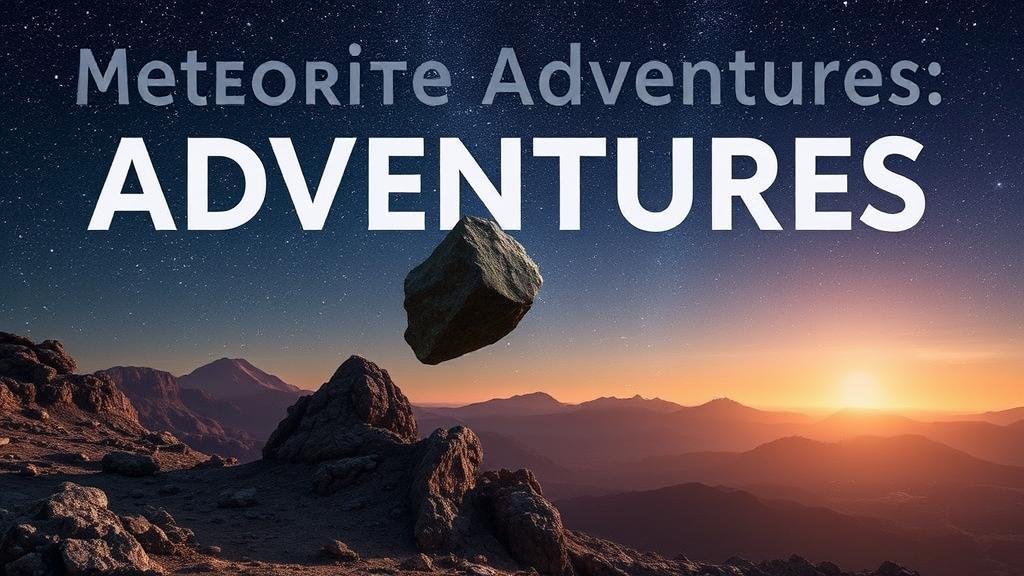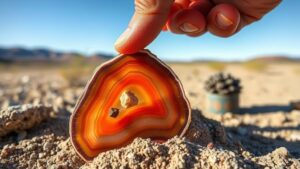Meteorite Adventures: Tracing Cosmic Visitors Across Earth
Meteorite Adventures: Tracing Cosmic Visitors Across Earth for Rockhounds and Mineral Collectors
Meteorite hunting offers a thrilling venture for rockhounds and mineral collectors eager to trace the origins of cosmic visitors. These fragments of asteroids, comets, and even planetary bodies provide invaluable insights into the solar systems history. As passion for collecting meteorites grows, enthusiasts must understand the science, classification, and practicality of this unique pursuit.
The Science of Meteorites
Meteorites are classified into three primary categories: stony meteorites, iron meteorites, and stony-iron meteorites. Each category can provide different clues about our solar systems formation and evolution. Understanding the composition of these meteorites is crucial for collectors interested in their authenticity and value.
- Stony Meteorites: Comprising about 93% of all meteorites, these are predominantly made of silicate minerals. Notable examples include the ordinary chondrites, which can provide insights into the early solar system but typically contain little economic value.
- Iron Meteorites: Representing around 6% of meteorites, these are primarily composed of iron and nickel. r durability makes them less susceptible to weathering, which can help identify them in the field.
- Stony-Iron Meteorites: A rare class, accounting for around 1% of all meteorites, these contain both silicate minerals and metallic elements. They are highly sought after due to their distinctive appearance and rarity.
Where to Hunt for Meteorites
Finding meteorites requires knowledge of local geology and observing where meteorites are most likely to land. Certain regions show high concentrations of meteorites due to their geological features and historical data.
- Africa: The Saharan Desert is one of the richest meteorite hunting grounds due to its vast, open terrain and minimal human disturbance. famous 2015 Saharan meteorite finds include the Henbury cluster.
- Antarctica: This frozen desert preserves meteorites exceptionally well due to its harsh environment. Discoveries made between the 1970s and today account for over 50% of all meteorites collected globally.
- North America: Areas like the American Southwest, particularly meteorite showers documented in Arizona, offer promising hunting locations.
Tools of the Trade
To successfully hunt for meteorites, collectors should equip themselves with the following tools:
- Magnet: Many meteorites, especially iron varieties, are magnetic, making a magnet an essential tool for determining potential finds.
- Map or GPS Device: Familiarity with local geology and a reliable GPS can lead collectors to previously documented finds.
- Hammer and Chisel: Useful for breaking up hard ground to uncover hidden meteorites.
Identifying Meteorites
Once a potential meteorite is collected, identifying it accurately can be challenging yet exciting. Key characteristics help in identification:
- Fusion Crust: Most meteorites will have a dark, glassy exterior called a fusion crust, formed during re-entry into the Earths atmosphere.
- Weight: Meteorites are often denser than ordinary rocks. A simple weight test can indicate whether it might be a meteorite.
- Chondrules: These small, round particles are a hallmark of stony meteorites and can help distinguish them from terrestrial rocks.
Ethical Meteorite Hunting
As the popularity of meteorite collecting increases, ethical considerations arise. Collectors should respect local laws and regulations regarding meteorite recovery. Many countries enforce strict guidelines relating to the recovery of meteorites, especially in protected areas. It is vital to understand:
- Whether the location allows meteorite hunting and any required permits.
- The impact of collecting on the local ecosystem and geological sites.
Real-World Applications of Meteorite Studies
Meteorite research has profound implications beyond just collection. For example, studies of the famous Hoba meteorite in Namibia have provided insights into the iron content of early planetesimals, thus influencing our understanding of planetary formation.
Plus, meteorites deliver organic compounds and amino acids, contributing to discussions about lifes origins on Earth and possibly beyond. For example, the Murchison meteorite contains more than 70 amino acids, highlighting the possibility of lifes building blocks existing throughout the cosmos.
Actionable Takeaways for Collectors
To embark on a successful meteorite hunting adventure, remember:
- Equip yourself with the right tools and knowledge about meteorite classification.
- Research locations with historical meteorite finds.
- Respect local regulations and consider the ethical implications of your collecting.
- Engage with the meteorite community for support and knowledge sharing.
As rockhounds embark on their meteorite adventures, they not only gather unique specimens but also contribute to a broader understanding of our universe. By tracing these cosmic visitors across Earth, collectors and researchers alike uncover fragments of humanitys celestial story.



